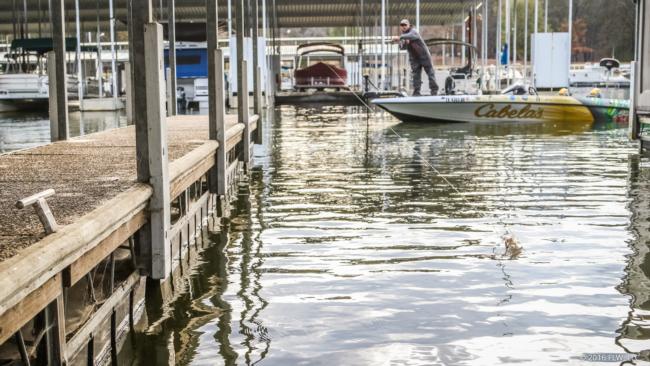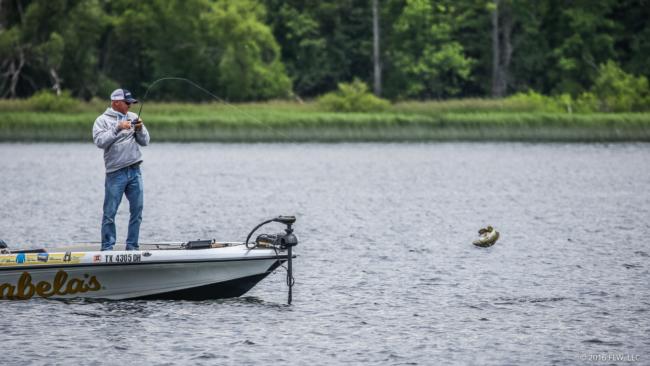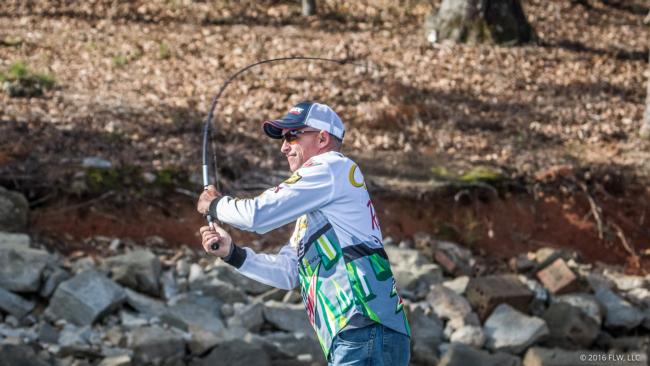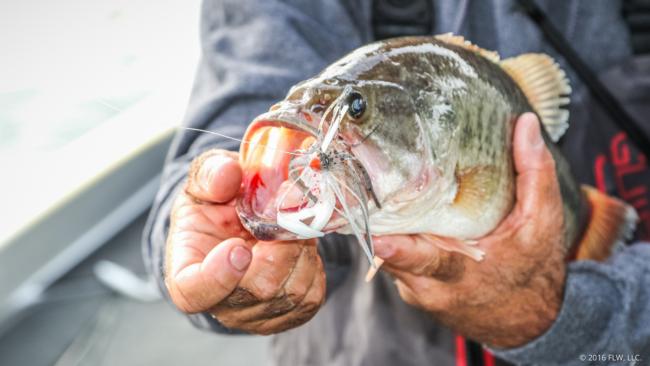3 Swim Jig Scenarios
Clark Wendlandt’s favorite times to target bass with this shallow presentation
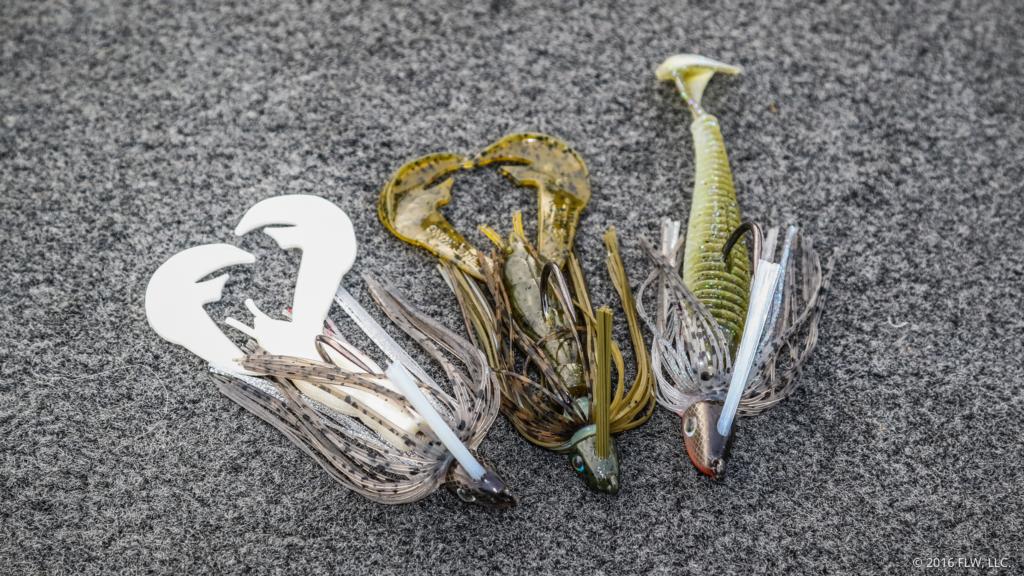
Let’s face it, there is no one bait for all scenarios a tournament angler will face – particularly not on the national level. However, FLW Tour pro Clark Wendlandt says he’s found one that’ll efficiently cover a broad range of options: the swim jig.
“I’ve noticed over the past three or four years that, as far as a versatile bait that you can just throw out there and reel in, the swim jig may be the easiest bait to fish, especially for a co-angler fishing out of the back of the boat,” Wendlandt says. “You may have to change your weight to make it heavier or lighter depending on the where you’re throwing it, but you can throw it in any situation.”
Typically built with a conical head for piercing sparse vegetation and wiggling its way through woody cover, the swim jig’s kind of the off-road vehicle of its lure category. Arming himself with the Strike King Hack Attack Heavy Cover Swim Jig, Wendlandt breaks down its uses by three main scenarios.
1. Shallow Cover
Docks, laydowns, water willows – such are the common targets here. The swim jig is a good choice to imitate shad running the perimeters of sheltering objects because of its ability to reach deep into shadowy areas.
“The swim jig is a great skipping bait,” Wendlandt says. “If you threw a spinnerbait, obviously, that bait’s not going to skip in there. With a swim jig, you can mimic that shad – especially spawning shad – by getting that bait really close to whatever cover they’re using.
“If you’re skipping docks, those fish are sitting under the floats or on the poles, and you can get the bait in there. You’re trying to get the bait into places where the bass would want to ambush shad, which is as far back in there or under there as they can get.”
Bait Specs: 3/8-ounce white swim jig with white Strike King Rage Craw trailer
Presentation Tips: Wendlandt likes the Rage Craw’s inherent action, but to facilitate skipping, he’ll shorten the profile by biting off 1/2 inch from the body. Also important is the right rod.
“It’s difficult to skip really well with a long rod, like a 7 1/2-foot flipping stick,” Wendlandt says. “No. 1, it’ll be too stiff to get that sling-shot action you need to get the bait under a dock. The other thing is that it’s too big and bulky. You need something shorter. A 6-10 to 7-foot, medium-heavy rod is what I recommend. You want it to have stiff backbone with a ‘loose enough’ tip. Otherwise, you’ll be backlashing all the time.”
2. Shallow, Grassy Bays
When bass hunt shad around hydrilla, milfoil or even eelgrass beds, Wendlandt finds the swim jig highly effective for covering water and for making quick casts toward any wakes, boils or busts. Downsizing his bait is necessary for proper presentation.
Bait Specs: 1/4-ounce green pumpkin swim jig with a green pumpkin Rage Craw
Presentation Tips: Lightening the jig minimizes snagging potential and, thereby, keeps the bait in play for longer periods.
“If you throw a heavier swim jig you’re constantly fighting that grass,” Wendlandt says. “You have to reel fast and hold your rod high. When you throw that 1/4-ounce bait, you can get it down there and keep it right in the strike zone.”
Noting that this technique can work just about any time you find fish in shallow vegetation, Wendlandt says he’ll give any distinct grass edge a thorough combing. More commonly, he’s making long casts to fan broad areas.
“Anytime there’s grass, there’s more than likely going to be bass in it,” he says. “My job is to figure out which baits I can target them with the best. A lot of times, the swim jig will be the most effective option.”
Wendlandt fishes lighter grass with 20-pound-test fluorocarbon, but if he’s constantly battling heavier vegetation, 50-pound-test braid gives him the muscle he needs to separate fish from slop.
3. Rocky Shorelines
When bass patrol riprap or chunk rock banks for the shad that feed on clinging algae, a swim jig provides an effective tool for probing the perimeter.
“It’s a little more like a swimbait, but I just like the profile that the swim jig presents with the skirt,” Wendlandt says.
Bait Specs: 1/2-ounce swim jig with 3 3/4-inch Strike King Rage Swimmer
Wendlandt likes this trailer because it has a little bigger profile than the Rage Craw. Also, the Rage Swimmer will actually make the swim jig wobble side to side, like a traditional swimbait presentation.
Presentation Tips: The fish will typically find a comfortable depth and consistently work that range along the rocks. Dialing in that zone is top priority.
“What you’re looking for is a depth range that the fish are spending time in,” Wendlandt says. “You might start by making 45-degree casts to the bank, but you might be getting all your bites in 6 to 7 feet of water and the boat’s sitting in 10.
“When that happens, I’ll start making my casts in 6 to 7 feet so I can keep my bait in the right zone for the longest period of time. Pay attention to every bite. If the bites are coming right at the boat, maybe you’re fishing too shallow and you need to back out a little bit.”
Wendlandt fishes rocky shorelines with fluorocarbon, sometimes as light as 12-pound-test in clear water.
